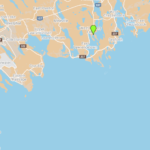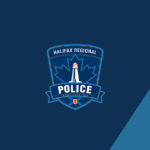(Ed note: Posting this for discussion, Nova Scotia announces their back to school plan for 2021-2022 at 3pm today. (Aug 23 2021)
School communities can prepare for a near-normal return to school in September.
Today, the Department of Education and Lifelong learning, in partnership with the Public Schools Branch and La Commission scolaire de langue français released details for the 2021-2022 school year based on Chief Public Health Office Guidelines in line with Prince Edward Island’s Moving Forward plan.
“The combined efforts of students, teachers, families, administrators and school staff helped make last school year a success. Students attended in-class learning and participated in sports and extracurricular activities and our school communities embraced public health measures. Cases of COVID-19 within our schools were kept minimal and were quickly addressed with support from the Chief Public Health Office. We cannot take this for granted,” said Minister of Education and Lifelong Learning Natalie Jameson. “The proactive and preventative measures we are taking this school year will build on last year’s successes, support student achievement and the continued well-being of students and staff.”
Enhanced cleaning and disinfection, regular hand washing and screening and managing symptoms of COVID-19 will be critical components of the 2021-2022 Back to School Plan. However, students will not be organized into cohorts when classes start in September.
Due to the evolution of the fourth wave in Canada this fall, driven by the more transmissible and virulent Delta Variant, and the inability for students under the age of 12 to be vaccinated at this time, the following guidelines for masking will be in effect until at least October:
- Masks are recommended for staff, students and visitors in all grades when transitioning through school building. Masks may be removed when seated in classrooms.
- Masks are recommended for staff in classrooms in Grades K-6 when physical distancing is not possible
- Masks are recommended for staff and students in all grades on school buses.
The plan also outlines what school communities can expect based on community transmission risks and assumes that 80 per cent of eligible Island residents are fully vaccinated against COVID-19.
“It is our goal to have Island children return to school, under as normal conditions as possible, for a full year of in-class learning. CPHO has worked closely with officials from the education system to assist in preparing for the upcoming school year,” said Chief Public Health Officer, Dr. Heather Morrison. “As a province, the most important thing we can do to support our children, their families and the education system is to continue taking steps to limit the importation of COVID-19 and to limit any spread of the virus when we do have cases.”
Vaccination remains the most effective way to reduce the risks of COVID-19, and is highly recommended for all eligible staff, students and visitors to schools. To increase accessibility to COVID-19 vaccines, Education Authorities will work with the Chief Public Health Office and Health PEI to develop pop-up immunization clinics in schools for students and staff as necessary within the school community.
The Province of Prince Edward Island has previously announced additional staff resources for the 2021-2022 school year to support the longer-term impacts of students and staff due to COVID-19. This includes 50 teachers, 34 education assistants, 15 school counsellors, 14 youth service workers, 4 autism consultants, 21 bus drivers, 44 cleaners and 19 administrative support personnel.
Backgrounder
In the 2021-22 school year, the following public health measures will be in effect. Unless otherwise stated, measures apply to all grades:
| Low-Risk Ongoing Public Health Measures | Elevated Risk Enhanced Public Health Measures |
| o Vaccination rates for those eligible are expected to be 80% or higher when school starts in the fall. When vaccine is approved for 5-12 yr. olds everyone who is able will be encouraged to get fully vaccinated. | o Continue following guidance for ongoing measures. |
| o Daily home or self-screening for symptoms of COVID-19 using the COVID-19 symptom screening tool is recommended for staff, students, and visitors.o If experiencing symptoms of COVID-19, get tested; testing guidance may evolve over time, refer to the most up to date information on the testing webpage.o Schools should follow procedures for students, staff and visitors who become sick during the school day. | o Continue following guidance for ongoing measures. |
| o Frequent hand washing or using hand sanitizer is encouraged throughout the day and proper respiratory etiquette, using age-appropriate interventions.o Handwashing supplies and alcohol-based hand sanitizer with at least 60% alcohol should be made available throughout the school.o Signage on personal hygiene etiquette such as handwashing, and sneezing and coughing etiquette, should be clearly posted throughout the school. | o Continue following guidance for ongoing measures. |
| o Regular cleaning and disinfection schedules with additional focus on frequently touched objects like door handles, railings, and waste containers, and shared items, like sports equipment, both in schools and on buses. | o Increased frequency of cleaning and disinfection for frequently touched surfaces, particularly between cohorts or where no cohorting is possible. |
| o Improvements to ventilation systems are recommended in schools where they do not meet standards.o It is recommended that ventilation systems be maintained to appropriate standards.o It is recommended to open windows when possible, and when weather permits | o Continue following guidance for ongoing measures. |
| o Masks are strongly recommended for staff, students, and visitors who are not fully vaccinated.o Masks are recommended for staff who work with students who are at higher risk of severe illness and outcomes from COVID-19 whenever physical distancing is not possible, regardless of vaccination status.o Masks are not required for students in school or on school buses.o It is the choice of the student, staff, or visitor to wear a mask if they choose.o Anyone who wants to wear a mask is supported in doing so. | o Masks are recommended for staff, students, and visitors in all grades when transitioning through school buildings.o Masks are recommended for staff who work with students who are at higher risk of severe illness and outcomes from COVID-19 whenever physical distancing is not possible, regardless of vaccination status.o Masks are recommended for staff in classrooms in Grades K to 6 when physical distancing is not possible.o Masks are recommended for staff, students, and visitors at all times in Grades 7 to 12 when physical distancing is not possible.o Masks are recommended for students in all grades on school buses. |
| o Cohorting is not required in school or on buses. | o Cohorting may be recommended in Grades K to 6, for both staff and students during classroom learning, recess, and breaks.o Cohorting not recommended in Grades 7 to 12 unless the school population is small enough that it can be effectively implemented.o Students should sit with consistent groups on the bus.o Visitors should be limited to essential activities for supporting learning. |
| o Physical distancing is not required, however, preventing crowding in indoor common spaces (e.g. entrances, hallways, gymnasiums, and buses) is encouraged. | o Physical distancing may be recommended in Grades 7-12, including, but not limited to, classroom desk configuration, locker/cubby access, cafeterias, and flow control in hallways and stairwells.o Physical distancing may be recommended for staff areas.o Physical distancing may be encouraged with people from outside of their close social groups and/or cohorts (if cohorts are in place). |
| o Consideration should be given to hosting in-school gatherings, assemblies, and extracurricular activities in Grades K to 6 and in schools with larger populations.o Gatherings and school sport activities must follow current community public health measures (e.g. gathering limits of 200 outdoors, 100 if the activity includes close contact, and 100 indoors). | o Continue following guidance for ongoing measures. |
| o Vulnerable students and staff can attend school; they may want to consult with their health care provider.o Alternative education plans (e.g. online learning) for those individuals who are at higher risk of COVID-19 and are not attending in person. | o Continue following guidance for ongoing measures. |
| o Community use of school facilities and access to buildings should follow current community public health measures. | o Community use of school facilities and access to buildings should follow current community public health measures. |
| o Schools should have operational plans, including for the elevated risk scenarios. CPHO review and approval is not required. | o School applies operational plan for elevated risk scenario. |
| o Occupancy may return to normal levels for K-12. Masking not required. | o Alternative means of transportation other than bussing are encouraged, where reasonable, including walking, bicycle riding, and parent/guardian drop-off and pick-up.o Masks are recommended for students in all grades on school buses. |
| o Public health will continue to manage cases of COVID-19 through isolation and contact tracing in the event there is a positive case associated with a school. Schools should continue to maintain accurate attendance records and class and bus lists to assist with contact tracing, if required. | o Continue following guidance for ongoing measures. |
Source: Release





